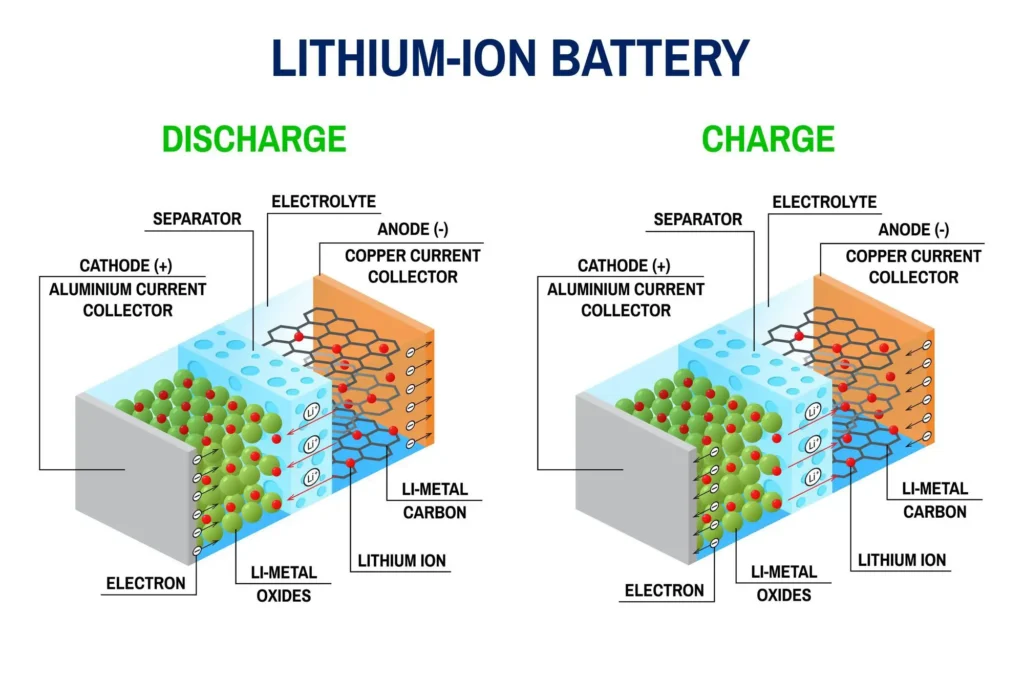By Sophia Raspanti
E-scooters, E-bikes, and other micromobility devices are becoming an increasingly popular mode of transportation for students living on or around campus. However, these electric vehicles haven’t just exploded in usage and popularity; the lithium-ion batteries used as a power source pose a significant hazard, causing countless fires, injuries, and fatalities across the nation.
Lithium-Ion Batteries: What’s So Dangerous?
Lithium-ion batteries are used in a wide range of products we utilize regularly, including watches, smart phones, E-scooters, and more. The battery has a positive (cathode) and negative (anode) terminal, which are separated by an electrolyte fluid, which allows the flow of ions, thereby generating current. The structure of lithium-ion batteries allows for a longer lifespan and are rechargeable, making them perfect for use in rechargeable electric vehicles.

However, lithium is highly flammable at room temperature, and when combined with the oxygen generated at the cathode, conditions present unique fire-safety and hazardous materials problems if an accident occurs. Damage to the battery may result in a phenomenon known as “thermal runaway”, where the heat generated from one small fire can lead to increased reactions which snowball into a large battery fire. These fires are difficult to extinguish with conventional methods as they are due to chemical reactions and are therefore increasingly resistant to water and smothering techniques. Additionally, the toxic gases produced within these fires are extremely hazardous to health. Finally, even if the flames are extinguished, lithium-ion batteries are highly likely to reignite, which produces additional risks.
How to Keep Yourself and Your Community Safe
Despite the proponent risks that lithium-ion batteries pose, there are many steps users can take to decrease the risk of these dangerous incidents.

You are the first line of defense in preventing these accidents.
There are many steps e-scooter owners can take to lower the risk of this spontaneous combustion. Students should be advised to only charge the scooter using the proper/compatible adapter and should never leave a charging scooter unattended. Lithium-ion batteries should not be overcharged, so students should remove the device from the charging adapter once full charge is reached. Additionally, students should routinely monitor and maintain these devices and take immediate action if signs of battery damage are observed (unusual odors, leakage, swelling, unusual overheating, etc.).
The university also has additional policies in place with regards to usage and storage of e-scooters, e-bikes, and other micromobility devices. Currently, scooters are prohibited from being brought inside university buildings and residence halls, as well as are not permitted to operate on campus sidewalks or walkways.
TL; DR: A Summary
E-scooters, e-bikes, and other lithium-ion battery powered micromobility devices are new and increasingly popular forms of transportation amongst college students that present unique fire-safety hazards. While rare, these incidents can be dangerous to not only the vehicle’s owner but to other members of the campus community. Students that choose to utilize these vehicles should be aware of the risks and follow proper usage guidelines to decrease potential harm.
The National Fire Association (NFA) presents the following guidelines to lower the risk of e-scooter/e-bike fire-related accidents:
- Only purchase e-bikes and e-scooters from manufacturers listed by a nationally recognized testing lab and labeled accordingly.
- Remove your device from the charger once the full charge is reached.
- Only use the compatible charger for your device (the one that came with the device).
- Stop using your device immediately if battery damage is observed.
- Unusual odor
- Change in color
- Swelling
- Leaking
- Get repairs done by a qualified professional.
If a fire occurs:
- Do not attempt to extinguish the fire on your own. Often, this will only make the fire worse.
- Evacuate the space immediately. Lithium-ion battery fires release toxic gases, including hydrogen cyanide, carbon monoxide, and hydrogen fluoride.
- Call 911.

References
Lithium-Ion Battery Safety. Nfpa.org. (n.d.). https://www.nfpa.org/education-and-research/home-fire-safety/lithium-ion-batteries
Gibson, K. (2022, December 23). At least 19 killed this year in Hoverboard, e-scooter fires, Feds say. CBS News. https://www.cbsnews.com/news/e-scooter-hoverboard-fires-deaths-injuries-feds/
Cohen, J. (2023, March 6). E-bikes are convenient. they can also cause fatal fires. The New York Times. https://www.nytimes.com/2023/03/06/realestate/e-bikes-fires-danger.html
Richter, F. (2023, March 10). Infographic: E-bike and Scooter Batteries are a fire hazard. Statista Daily Data. https://www.statista.com/chart/29472/fires-caused-by-lithium-ion-batteries/
Environmental Protection Agency. (2023, March 21). The Importance of Sending Consumers’ Used Lithium-ion Batteries to Electronic Recyclers or Hazardous Waste Collection Facilities. EPA. https://www.epa.gov/recycle/importance-sending-consumers-used-lithium-ion-batteries-electronic-recyclers-or-hazardous
Minos, S. (2023, February 28). How lithium-ion batteries work. Energy.gov. https://www.energy.gov/energysaver/articles/how-lithium-ion-batteries-work#:~:text=The%20movement%20of%20the%20lithium,to%20the%20negative%20current%20collector.
E-scooter, e-bike and hoverboard injuries and deaths are on the rise; celebrate National Fire Prevention Week with the safe use of micromobility products. U.S. Consumer Product Safety Commission. (2022, October 11). https://www.cpsc.gov/Newsroom/News-Releases/2023/E-Scooter-E-Bike-and-Hoverboard-Injuries-and-Deaths-Are-on-the-Rise-Celebrate-National-Fire-Prevention-Week-with-the-Safe-Use-of-Micromobility-Products
